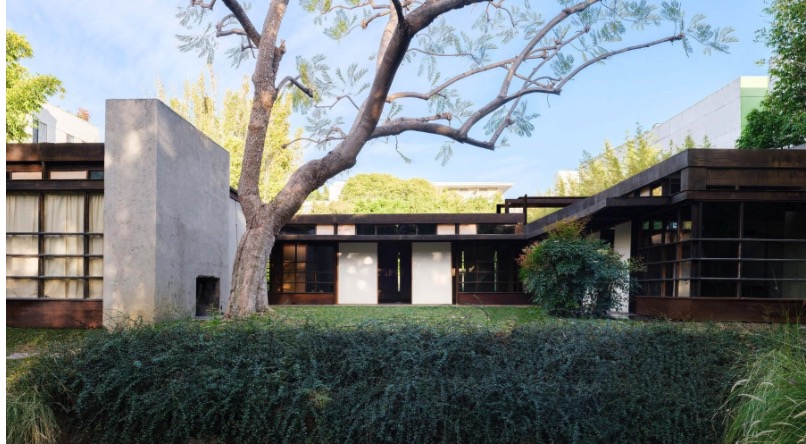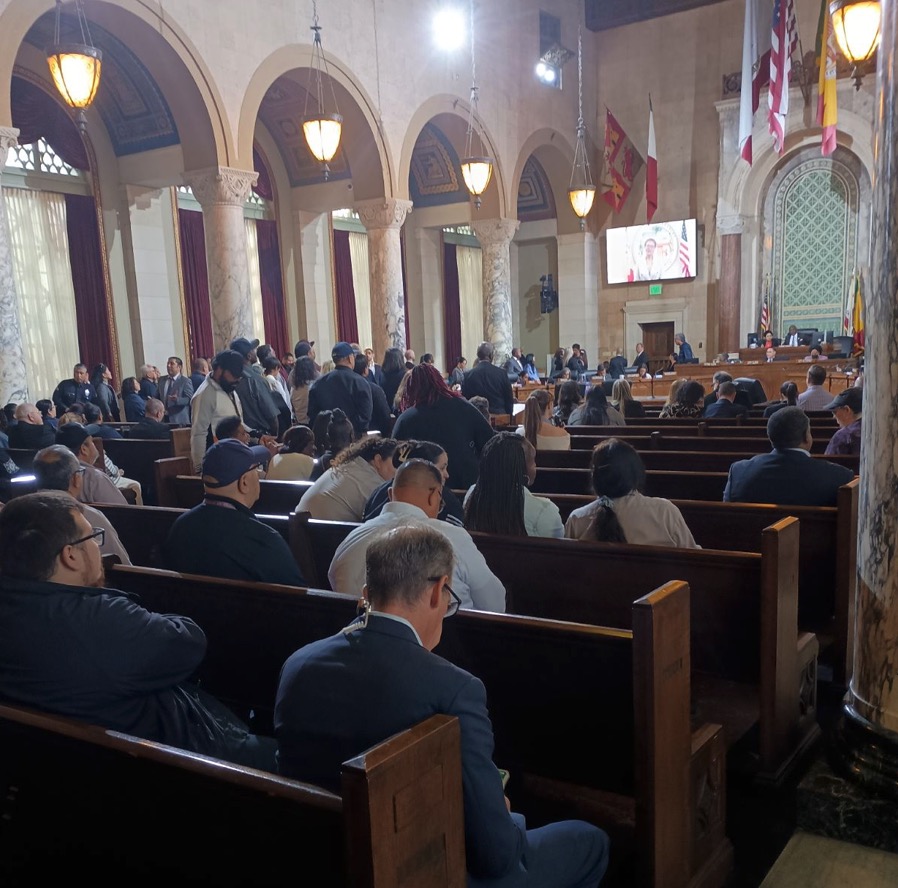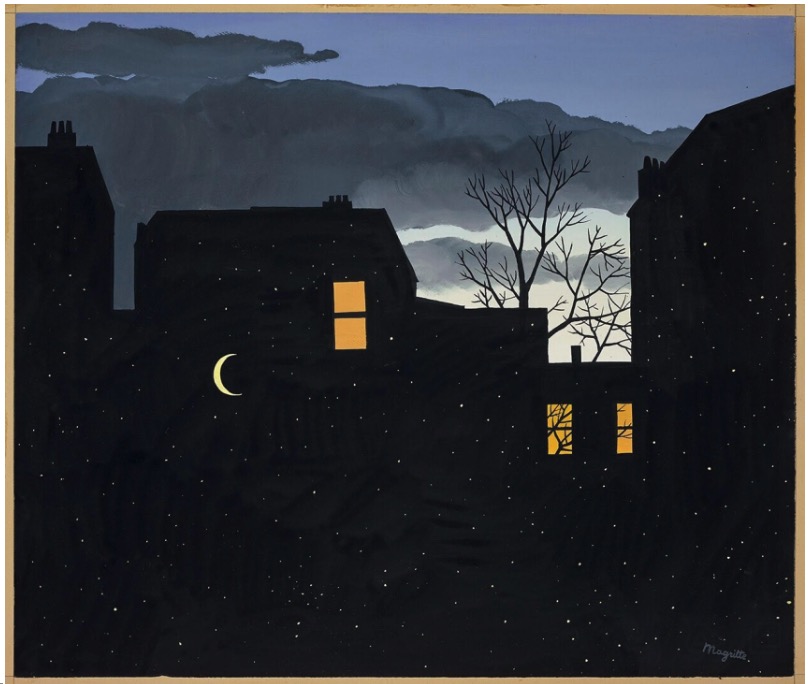Comments
ERIC PREVEN'S NOTEBOOK - As we honor Veterans Day Monday, it’s meaningful to remember its origins as Armistice Day—a day marking the end of World War I and embodying hope for a peaceful future. This ceasefire, enacted on November 11, 1918, at the eleventh hour of the eleventh day of the eleventh month, called for reflection and symbolized a world aspiring to move beyond conflict.
While Veterans Day honors those who served, it also reminds us of the transformations that followed WWI, as many sought fresh beginnings and the chance to build something lasting. Architect R.M. Schindler was one such visionary.
Encouraged by Austrian architect Adolph Loos, Schindler moved to Chicago in 1914, where he joined Ottenheimer Stern and Reichert and began sharing his unique design philosophy through a series of lectures now known as the Schindler Program. Yet Schindler always dreamed of working with Frank Lloyd Wright, whose work he admired from the 1910 Wasmuth Portfolio.
In late 1918, with the war ending, that dream came true—Wright hired him. Schindler soon took over Wright's American projects when Wright traveled to Japan, and in 1920, he moved west to Los Angeles to oversee the Aline Barnsdall House (CD13). Los Angeles would become Schindler's canvas, where he opened his own practice and developed an iconic style that shaped modern American architecture.

The Kings Road House in WeHo by RM Schindler.
Schindler’s journey, set against the challenges and opportunities of his era, reflects the creative struggle to remain true to one’s vision—a journey that resonates today. His life and work are celebrated in Space Architect, a documentary narrated by Meryl Streep and Udo Kier premiering as part of the Architecture & Design Film Festival on November 19 at the Writers Guild Theater in Beverly Hills.
The film includes a Q&A with filmmaker Valentina Ganeva and architecture critic Frances Anderton, diving into Schindler’s complex relationships with Wright and Neutra and examining the role of architecture in shaping culture and identity.
Where: Writers Guild Theatre
135 S. Doheny Dr., Beverly Hills, CA 90211
Running Time: 93 minutes
Followed by: Q&A with filmmaker Valentina Ganeva and architecture critic Frances Anderton
Free parking is available on the premises. Don’t miss out—this is the only screening, so be sure to get your tickets while they last!
Tickets: HERE
[insert pic]

Disclosure: I am a contributing producer and have happily lived in the Gold House designed by Schindler in 1946, since we restored it in 2000 with Elisa Rooks, Jeffrey Fink and Ed Moosebrugger.
Yo Elon: Dude, we can’t just go in there and fire a million federal employees, no matter how gnarly that sounds. But there are totally some epic ways we can bring private-sector vibes into government without blowing it up. Check it out:
Cut the Red Tape, Bro: The government is drowning in rules, especially in areas like construction. NEPA is a monster, making projects take years just to get off the ground. Imagine if we streamlined that mess so projects went from “idea” to “let’s build it” without all the drag. Fast-tracked infrastructure? That’s how we build stuff that actually matters.
Hack the Procurement System: Dude, buying stuff in government is, like, way harder than it should be. The Federal Acquisition Regulations (FAR) are just pages and pages of rules—makes buying a desk feel like launching a rocket. Let’s simplify that, so we’re spending cash where it counts, fast. Get rid of the fluff and make things actually work.
Free the Bureaucrats, Man: These government guys are trying to serve, but they’re buried in rules! Imagine if they could make decisions, innovate, and be judged on actual results—like any startup. Give them the flexibility to do their job, and I bet we’d see way better results. Less compliance, more creativity.
Fix Hiring, Make it Fast: Dude, federal hiring is ancient. It takes forever just to get someone on board. Streamline the process, and we’ll get fresh talent who can shake things up. Like, let’s make it as easy as a few clicks—no need for months of waiting around.
Bro, the private sector thrives because we keep it simple, fast, and focused on results. Imagine if we had a government that was lean, mean, and ready to shred through the red tape. Let’s bring the innovation... you know it’s the way to go.
Make The Times Great Again: I spotted a tweet from Patrick Soon-Shiong, after Trump’s election, promising a new editorial board at the LA Times. Interesting, cryptic—and disappointing, as it turns out. As someone who relies on newspapers to hold power accountable, watching the Times cozy up to those in power instead of scrutinizing them is infuriating. When a paper aligns with politicians and their handlers, as they often do, it leaves the public in the dark, failing the very audience they claim to serve.
Two recent articles by Rebecca Ellis and Emily Alpert Reyes exemplify this issue. Both covered significant controversies in LA politics, but neither featured a single comment from the public. In an era where transparency and public accountability are crucial, ignoring community voices in these stories is an unforgivable lapse. These are the very politicians who buy ads in the Times, and the journalists covering them must engage with the critics, skeptics, and ordinary residents whose lives are impacted.
Take Emily Alpert Reyes’s article from 2018 on Greig Smith’s appointment to an interim City Council seat. Smith, a former councilman and consultant for Waste Management, has ties to city contractors and a record that would raise questions for any resident following local government. He came down on Friday to give a pubic comment in support of Jim McDonnel's appointment. Yet, Reyes’s piece reads like a practical endorsement of Smith’s appointment, emphasizing Council President Herb Wesson’s goal of avoiding a costly election but completely ignoring the potential for public concerns over transparency and accountability. By failing to include these perspectives, the story skews in favor of the city’s narrative, benefiting officials and leaving residents voiceless.
Rebecca Ellis’s piece earlier this month on the Ridley-Thomas contracting probe repeats the same omission. The investigation revealed deep flaws in LA County’s contracting practices, yet the article includes only the voices of consultants and supervisors—those closest to the situation and, in some cases, responsible for these failings. Public voices were missing, despite the fact that community members actively tried to weigh in. This gap effectively shields those in power from scrutiny, particularly as the full report remains inaccessible to the public. Including residents’ perspectives would have brought a necessary counter-narrative, challenging the effectiveness of these so-called “reforms” and questioning why taxpayer dollars were used for a report they cannot even see.
These omissions reflect a troubling pattern: nothing ever changes; when stories are framed solely by insiders, they protect those in power and silence those impacted most. By failing to include community voices (moi) the Times leaves readers with one-sided narratives on issues that deserve robust public debate.
The Times needs to reconnect with its purpose. If it’s going to cover our city’s power players, it must also hold them accountable. Engage the public. Tell the whole story. That’s how the Times can truly serve its readers—and how it can be great again.
Classic Chaotic Frenzy, Courtesy of Marqueece Harris-Dawson:
Good morning, Council Members. Friday’s meeting was quite the spectacle. It began with heartfelt tributes to City Hall’s essential workers—the custodians, mailroom staff, and even the friendly parking attendants who keep things moving. One mailroom worker recalled how, during COVID, their boss encouraged them with, “We’re all vulnerable together.” It was nice to hear about unity in those difficult times.

City Council kept speakers out even though there were open seats.
But let’s not gloss over the other realities. Tony Royster, head of GSD, was present. I’ll never forget chasing him down in the City Mall to get public records on some eyebrow-raising contracts. Royster isn’t just managing city services—he’s deeply involved in the kind of real estate deals that demand scrutiny.
Then came the city’s annual veteran recognition ceremonies. Given that the agenda had just one item—the confirmation of Jim McDonnell as LAPD Chief—you might have expected a quiet day. But you’d have fallen for a classic City Council maneuver. Anticipating a crowd of police reform activists opposing the Mayor’s choice, the council pulled a classic play: they invited Joshua from K-pop band Seventeen, ensuring a massive turnout of fans.
A masterstroke, proving Marqueece Harris-Dawson learned well from his sensei, Herb J. Wesson. The result? A chaotic clash of K-pop fan frenzy and activism—a perfectly orchestrated mess to drown out dissent. This wasn’t just an accidental mix-up; it was straight from the council’s playbook. A special meeting, a single agenda item, and suddenly, we’re looking at a packed house where voices of opposition are nearly impossible to hear.
This kind of maneuvering might be old news, but it deserves a spotlight.
McDonnell “Get some Rest”
City Council 080923 Highlights
A member of the public encourages Jim to "Just say no!" to the job of LAPD Chief.
Next Speaker:
Smart Speaker: Hello, yes.
Tanea Ysaguirre, Deputy City Attorney: Speaker, you'll have one minute for the item.
Smart Speaker: Are you speaking to me? It's Eric Preven. I'm sorry, it's hard to hear. Can you just confirm—is it me? Are you talking to me? When you say "speaker," I don't know if you're talking to me or not. Ysafuirre, try being a human being. There's no need to be an idiot. McDonnell is a guy who was appointed to the Citizens' Commission on Jail Violence by Don Knabe, so that raises an eyebrow. But it was the Citizens' Commission on Jail Violence. And yes, he did lose to Alex Villanueva, but anyone claiming he's going to be colluding with ICE is misleading the public.
Is it an innovative choice to lead the police department? No, it's not. But I think that’s misleading, and we shouldn't be spreading that kind of narrative. I acknowledge there was a period of creepy behavior, as there has been with many of these figures, including members of this council that sit before us, totally checked out.
Tanea Ysaguirre, Deputy City Attorney: Speaker, your time is up.
Maestros in Motion—a fitting phrase for the theatrics of LA politics. Leading the ensemble is Paul Krekorian, City Council’s consummate storyteller, spinning his version of City Hall history under the guise of reform. His latest act includes the Governance Reform Commission and a new Ethics Commission—“reforms” set to take full effect in 2032. But let’s be real: by then, Krekorian will be long gone, having taken his curtain call while the public still waits for real change to arrive.
What we’re seeing is delay, not disruption. Krekorian’s recent redistricting experience conveniently carved out troublesome sections of CD2, dropping them into Nithya Raman’s Frankenstein CD4. Meanwhile, he’s secured his legacy by appointing a trusted lieutenant, Anna Hovaspian, as Executive Director of the redistricting group, ensuring a back channel long after his departure. This isn’t reform—it’s pure political stagecraft.
At the county level, Lindsey P. Horvath is performing her own self-harm with Measure G, a rushed initiative that’s about to squeak by withy 40% of supervisors against it. Kathryn Barger said, “It’s not over until it’s over. The close margins reflect that Measure G was never a true referendum. Instead, Measure G was pushed through by a campaign that lacked the transparency and public engagement necessary to claim a sweeping majority.”
Holly J. Mitchell, also among the dissenters, has now taken it upon herself to micromanage the Hollywood Bowl lineup for “cultural relevance.” Exhausting! True cultural relevance is the work of real maestros like Gustavo Dudamel, whose LA Phil and YOLA genuinely inspire unity and harmony. Yet as Dudamel departs for the New York Philharmonic, the irony is plain: the artist who brought harmony is leaving, while those sowing discord remain.
If we want real change, let’s demand more than applause-worthy rhetoric from Krekorian and his colleagues. Let’s ask for a performance where every part of the city is represented and where change isn’t delayed for convenience. Sit down, Supervisor Horvath; sit down, Supervisor Mitchell. Mr. Krekorian, your term is up. True leadership inspires harmony—it doesn’t manage the playlist.
By the time Gustavo Dudamel returns to LA after his five-year term in New York, we will still be waiting for these long-promised reforms to take the stage. Real maestros like Dudamel don’t just direct—they inspire. Real reform doesn’t wait for orchestrators; it creates spaces where all voices are heard, where harmony takes shape naturally, not engineered behind closed doors.
Containing the Narrative of Hate:
Shout out to the Welcome to the Museum campaign in the Netherlands—a powerful initiative that opens museum doors to refugees, fostering a sense of connection and belonging. It’s a beacon of how cultural resources can bring people together. But we must acknowledge the complexities and tensions beneath the surface, even in a place as welcoming as the Netherlands, where recent attacks targeting Israeli athletes highlight how deep-seated anger and antisemitism can erupt, despite the best intentions.

"Les Poison" by Rene Magritte, 1939, the first in his L'empire des lumières series, boldly merges day and night—a haunting theme he revisited for over a decade.
René Magritte, was an artist who reminded us that appearances are deceptive. Magritte showed us worlds where objects and people mix in surreal ways, urging us to question what we think we know. He understood that we often miss the narratives lurking beneath the surface. Just as his art invites us to look deeper, we too must dig beneath the layers of divisive narratives that fuel hate around the world.
Which brings me to the George Lucas Museum of Narrative Art here in Los Angeles. Lucas’s collection will be centered in Los Angeles a city known for its diversity and will tell stories that resonate with countless audiences. This museum should serve as a space for stories that counter hate, where the narratives of our world’s complexities are presented openly and accessibly—free of charge. Just as the Netherlands strives to open cultural doors to everyone, we too must commit to making this museum a space where narratives are not contained by ticket prices or exclusive audiences.narrative art accessible
To counter hate and foster unity, let’s ensure that our museums, our public spaces, and our stories are accessible to all, creating a narrative that brings people together rather than dividing them.
George and Mellody, You Can Afford It—and It’s the Perfect Spot:
With a $5.5 billion net worth projected to grow to $14.6 billion in 20 years, George Lucas can easily absorb the $640 million cost of making the Lucas Museum free over two decades. [That's paying $20 a head annually for an estimated 1.6 million visitors.] This museum sits in a prime location—Exposition Park—right next to the free California Science Center, in a cultural corridor that already draws millions of visitors from around the world. Charging an entrance fee here would block access to a community resource gifted to Lucas by the city and county. This is the perfect opportunity to make it open to everyone for free.
(Eric Preven is a longtime community activist and is a contributor to CityWatch.)








